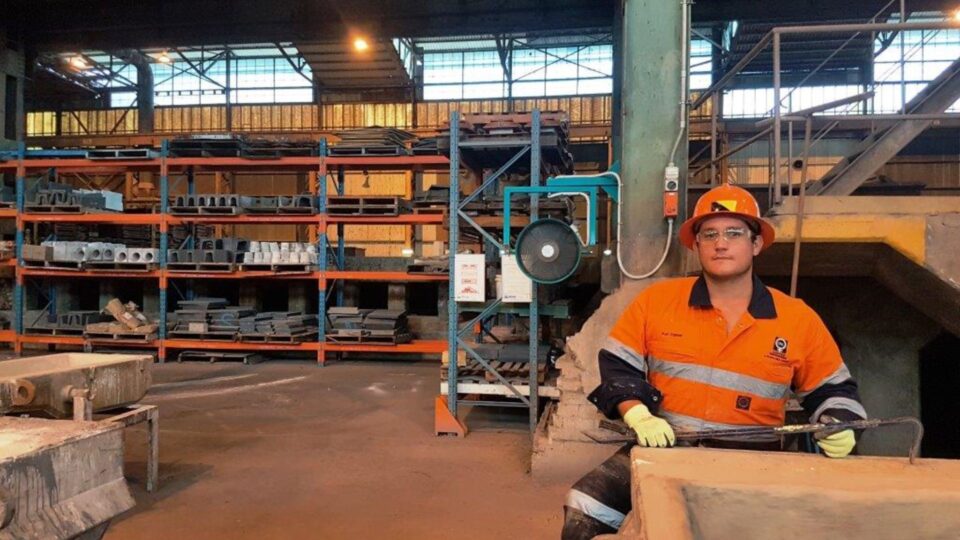According to research performed by Safe Work Australia, 69 Australian workers have already been killed at work in 2023. When managing your manufacturing facility, you must prioritise health and safety.
Manufacturing industry operations should not present a risk to human health and well-being. Keep reading as we explore the top hazards in the manufacturing industry and how to manage them.
What are the biggest hazards in manufacturing?
Let’s explore some of the leading causes of injury and death in the manufacturing industry to help you mitigate the danger to your workers:
- Machinery malfunctions – if control systems are faulty or your motors break down, this can present a risk to worker safety, as it presents a fire risk or lead to injury.
- Slips, trips, and falls – manufacturing workers often perform their duties on elevated platforms, which presents the risk of slips, trips, or falls.
- Electrical hazards – without proper grounding for equipment or electrical safety training for employees, electrocution can occur in a manufacturing environment.
- Fires and explosions – if you are working with ignition sources and combustible materials, there is a significant risk of fires and explosions that could injure multiple on-site workers.
- Noise exposure – manufacturing facilities are often noisy due to the number of machines operating simultaneously. This can distress your employees and cause hearing problems.
- Air hazards – when working in a manufacturing plant, contaminants in the air can lead to lung conditions like asthma. It’s important to ensure proper ventilation, especially in confined spaces.
- Poor machine guarding – without proper guarding, crush injuries can occur. An employee’s clothing could get entangled with the machinery, leading to amputations or other injuries.

What are air hazards in manufacturing?
There are many different causes for air hazards in manufacturing, including:
- Welding – high temperatures are used for welding metal. These high temperatures cause the emission of gases, fumes, and hazardous air pollutants from vaporised metal. Both welding fumes and ozone can lead to significant respiratory distress with prolonged exposure.
- Spray painting – overspray from spray paint contains volatile organic compounds and toxic pigments. These chemicals can lead to respiratory irritation and long-term health complications.
- Woodwork – any woodwork process can lead to the emission of wood dust particles, leading to respiratory distress when inhaled for sustained periods. There is also a risk of combustion due to dust particles in the air.
- Minerals processing – if you pulverise, crush, or grind minerals, you can cause fine metal particles and silica dust to become airborne. Silica poisoning and heavy metal poisoning can occur when these minerals are inhaled.
- Medical products – when manufacturing medical products, harmful byproducts can be emitted into the air. These byproducts can pose a risk to worker health.
By contacting a ventilating equipment manufacturer, you can access support in planning your ventilation strategy to mitigate these concerns. Fanquip has experienced ventilation teams that can evaluate your needs and make recommendations for your facility.
Top safety considerations for manufacturing
Now that you completely understand the top health and safety concerns for an advanced manufacturing facility let’s discuss how you can remedy and mitigate these safety risks.
Safe equipment handling
You can make your manufacturing equipment safer by taking the following precautions:
- Investing in signage to ensure employees are aware of the dangers around them.
- Ensuring all electrical equipment is grounded and checked regularly.
- Providing guards for any exposed mechanisms to prevent crush injuries.
- Checking equipment regularly for faults to prevent system malfunctions.
Employee safety training
Before you allow employees on-site, you need to know that they have a sufficient understanding of how to navigate their daily responsibilities safely. Employees should be briefed on emergency response procedures, health and safety best practices, and the protocols for reporting potential hazards.
Noise management
Noise management solutions are essential in a manufacturing facility. There are noise management solutions you can invest in to reduce the noise level and ensure your manufacturing processes are sustainable and compatible with long-term health.
Ventilation solutions
Manufacturing ventilation solutions are important to providing clean and breathable air for your employees. Here are some of the top ventilation solutions to help reduce the number of contaminants in the air:
- Mobile fume extractor – a mobile fume extractor is ideal for collecting welding fumes, grinding dust, dry dust, and soldering fumes. It is portable, allowing you to reposition the extractor to the source of contamination.
- Venturi air mover – the venturi air mover helps to disperse fumes, cool personnel and machinery, and provide ventilation. This is the right solution to make your facility more comfortable and ensure consistent airflow.
- Sidewall exhaust fans – a side wall exhaust fan provides extraction, fitting into your sidewall to extract heat, steam, or dust.
- End wall exhaust fans – an end wall exhaust fan is secured into your end wall to ventilate a large space and provide a steady air exchange rate.
- Centrifugal fans – a centrifugal fan is a low-noise solution for managing air contaminants.

Summary
Managing manufacturing hazards is essential to keep your workers safe – an employer’s primary duty. It will also help protect you from litigation should an injury occur on-site.
At Fanquip, we are experts in manufacturing ventilation and air hazard prevention. Contact our team today to begin planning your ventilation strategy with expert advice on hand.
